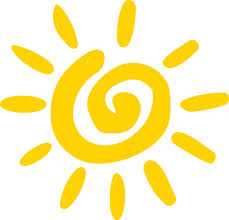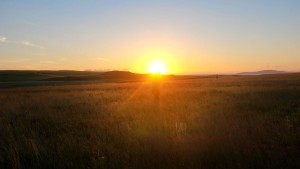European midsummer holidays, traditions, and celebrations are pre-Christian in origin. 
They are particularly important in geographic Northern Europe – Sweden, Denmark, Norway, Finland, Estonia, Latvia and Lithuania – but is also very strongly observed in Poland, Russia, Belarus, Germany, Netherlands, Ireland, parts of the United Kingdom (Cornwall especially), France, Italy, Malta, Portugal, Spain, Ukraine, other parts of Europe. The celebrations also exist elsewhere in the Northern Hemisphere – such as in Canada, the United States, Puerto Rico. They exist too in the Southern Hemisphere (mostly in Brazil, Argentina and Australia), where this imported European celebration would be more appropriately called “Midwinter”.
Midsummer is also sometimes referred to by some Neopagans as Litha, stemming from Bede‘s De temporum ratione which provides Anglo-Saxon names for the months roughly corresponding to June and July as se Ærra Liþa and se Æfterra Liþa (the “early Litha month” and the “later Litha month”) with an intercalary month of Liþa appearing after se Æfterra Liþa on leap years. The fire festival or Lith- Summer solstice is a tradition for many pagans.
Midsummer solstice celebrations are often on June 24, the day of the solstice in Roman times.
Although Midsummer is originally a pagan holiday, in Christianity it is associated with the nativity of John the Baptist, which is observed on the same day, June 24, in the Catholic, Orthodox and some Protestant churches. It is six months before Christmas because Luke1:26 and Luke 1.36 imply that John the Baptist was born six months earlier than Jesus, although the Bible does not say at which time of the year this happened.
Midsummer has been traditionally celebrated with the lighting of bonfires, feasting and merrymaking.

Midsummer games taking place after dancing around the Maypole, here depicting throwing balls at piles of cans
In late 14th-century England, John Mirk of Lilleshall Abbey, Shropshire, gives the following description: “At first, men and women came to church with candles and other lights and prayed all night long. In the process of time, however, men left such devotion and used songs and dances and fell into lechery and gluttony turning the good, holy devotion into sin.” The church fathers decided to put a stop to these practices and ordained that people should fast on the evening before, and thus turned waking into fasting.
Mirk adds that at the time of his writing, “…in worship of St John the Baptist, men stay up at night and make three kinds of fires: one is of clean bones and no wood and is called a “bonnefyre“; another is of clean wood and no bones, and is called a wakefyre, because men stay awake by it all night; and the third is made of both bones and wood and is called, “St. John’s fire” (Festial 182).” These traditions largely ended after the Reformation, but persisted in rural areas up until the 19th century before petering out.
Other Midsummer festivities had uneasy relations with the Reformed establishment. The Chester Midsummer Watch Parade, begun in 1498, was held at every Summer Solstice in years when the Chester Mystery Plays were not performed. Despite the cancellation of the plays in 1575, the parade continued; in 1599, however, the Lord Mayor ordered that the parades be banned and the costumes destroyed. The parade was permanently banned in 1675.

Tansys Golowan – A Cornish hilltop bonfire on Midsummer’s eve.
Traditional Midsummer bonfires are still lit on some high hills in Cornwall (see Carn Brea and Castle an Dinas on Castle Downs). This tradition was revived by the Old Cornwall Society in the early 20th century. Bonfires in Cornwall were once common as part of Golowan, which is now celebrated at Penzance, Cornwall. This week long festival normally starts on the Friday nearest St John’s Day. Golowan lasts several days and culminates in Mazey Day. This is a revival of the Feast of St John (Gol-Jowan) with fireworks and bonfires.
- England
June 24, Midsummer Day, the feast of St. John the Baptist, is one of the quarter days in England. In recent years on the Summer Solstice, English Heritage has run a “Managed Open Access” to Stonehenge for the Summer Solstice celebrations.
- Scotland

Orkney Midsummer
Midsummer festivals are celebrated throughout Scotland, notably in the Scottish Borders where Peebles holds its Beltane Week. The Eve of St. John has special magical significance and was used by Sir Walter Scott as the title, and theme, for a pseudo-ballad poem. He invented a legend in which the lady of Smailholm Tower, near Kelso, keeps vigil by the midnight fires three nights in a row and is visited by her lover; but when her husband returns from battle, she learns he slew that lover on the first night, and she has been entertained by a very physical ghost. In the Orkneys too there is an annual week long Summer Solstice Celebration.
- Wales
In Wales it is called Gŵyl Ifan, or Gŵyl Ifan Ganol Haf (St John’s of Midsummer) to distinguish it from Gŵyl Ifan Ganol Gaeaf (St John’s of Midwinter, the feast of John the Evangelist). Great agricultural fairs used to be held at this time, along with merriment and dancing. A bonfire was also kept this night. With the advent of non-conformist beliefs on the Welsh socio-political culture, this (among so many other similar festivals) suffered greatly, and its observance finally died out in SE Wales by the end of the 19th century. However, since 1977, a folk-dance revival started in Cardiff, and is held now annually on this feast day.
Ealing Abbey, ed. JL 25 April 2016
